An Iconic Lake and Nondescript Aspens: Revisiting the Bear Lake Road
No Comments
Bear Lake Road is the most popular area of Rocky Mountain National Park because it gives quick access to locations which are representative of the beauty of the park. It had been a decade and half since my last visit there. In the while I had been traveling to less crowded parts of the park. However, I wanted to refresh my memory for the benefit of readers of my upcoming book, and also update my photos of the area which were shot on 35mm film – not those in this post, which are all large format. This post revisit in detail two contrasting spots along the Bear Lake Road.
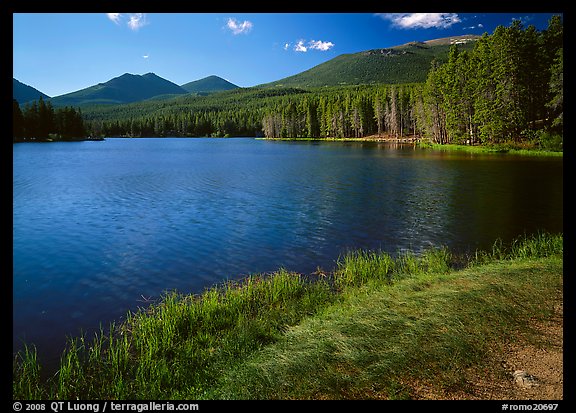
Amongst the lakes situated along Bear Lake Road, Sprague Lake is the easiest to access. It provides a view of the Continental Divide which is one of the most iconic in the park. It is the first lake you’ll encounter on the road. The other trailheads further up the road often fill up in the early morning, requiring you to use the free shuttle. At Sprague Lake, parking is easy. Little hiking is required, which makes it a convenient sunrise location. When you come upon the shoreline, you’ll see the east side. Unless there is a spectacular sky on the east, you’ll want to continue counterclockwise until you can look towards the west towards the Continental Divide.

I kept walking (about a quarter of a mile) until I reached the east end of the lake. There were many photographers on the lake shore, but I was surprised to see that most of them had set up closer to the trailhead. I think the further east you go, the better the perspective is, because you are further from the western shoreline. This makes the peaks stand out above the trees, which also appear smaller compared to the peaks. You can see that by comparing with the night photo I made on the way.
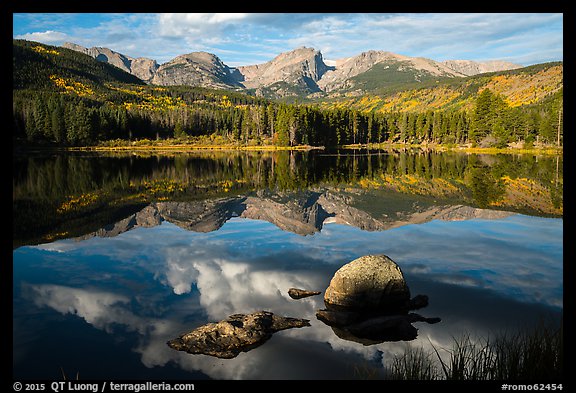
The other benefit of photographing from the east end of the lake is that you can find boulders in the water to help anchor the composition. One photographer was camped near what I thought was the round boulder I used for a foreground a decade and half ago. I tried to find an alternative before concluding that, back then, I had indeed picked up the “best” spot. I asked the photographer the permission to set up next to him. Upon closer examination, I remarked that there was a second, flatter rock on the left. When I mentioned to the photographer that I did not remember it, he told me it had been there for a long time.
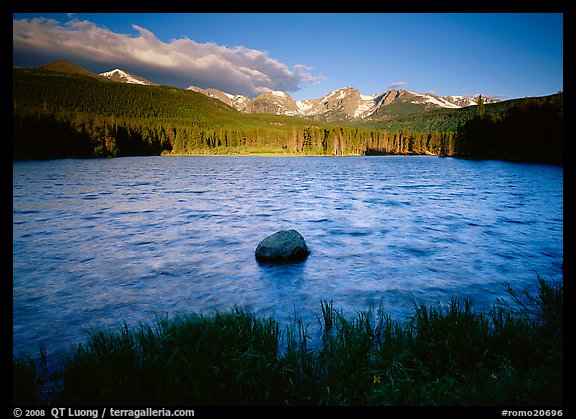
The light was weak at sunrise, but it would have been a bad idea to pack and leave, as the light improved in the following hour, in conjunction with some interesting clouds. Upon returning home, I checked my 1999 image (marked 2008 because it is the date of publication). Sure enough, the flat rock wasn’t present, maybe due to the higher water level in the springtime.
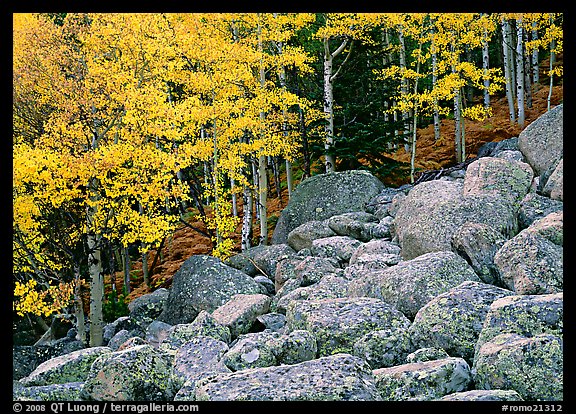
While I expected to be able to find the spot of my 1999 Sprague Lake image, I wasn’t so sure about the forest scenes that I photographed in the fall of 1998. The former is one of the park’s icons, whereas the latter is a scene which seemingly could be found anywhere. I remembered spending several hours at a mere boulder field surrounded by aspen on both sides, that offered many different compositions. I was particularly attracted to a few small trees growing close together out of the boulders, which had colorful leaves. However, at that time, I didn’t take note, nor did I memorize the location.
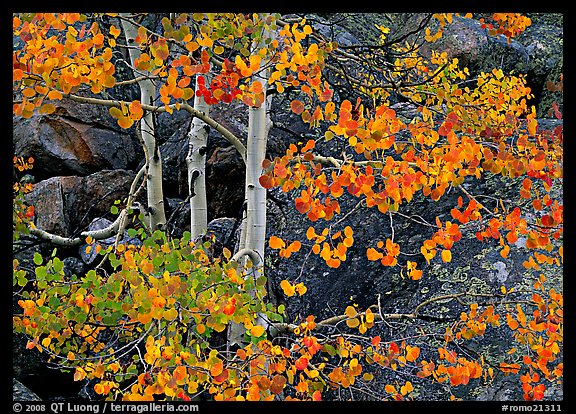
Driving up the Bear Lake Road, I noticed a steep boulder field on the north side, about 0.7 miles before the Glacier Gorge trailhead. There is room for a few cars in the curve and more at the nearby Prospect Canyon pull-out.

I scrambled up the boulders, and here they were, my old friends. Out of all the trees in the park, I had found the same nondescript aspens I had photographed seventeen years earlier!
View more images of Rocky Mountain National Park

